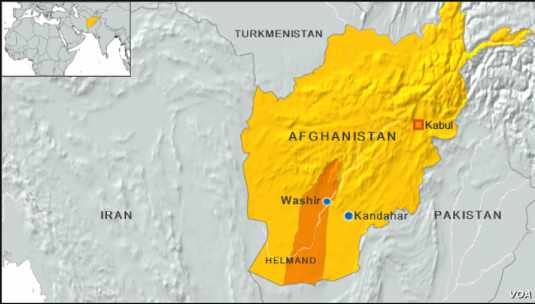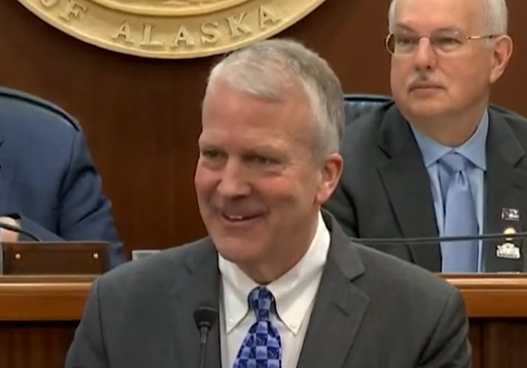ABOARD A MILITARY AIRCRAFT, Feb. 12, 2012 – A quick trip to Afghanistan this week, and meetings with leaders and troops there, encouraged the chairman of the Joint Chiefs of Staff that the Afghan National Security Forces will be ready by 2014 to take the combat lead.
Army Gen. Martin E. Dempsey spent time in Kabul with Afghan Minister of Defense Abdul Rahim Wardak, U.S. Marine Corps Gen. John R. Allen, commander of International Security Assistance Force–Afghanistan and U.S. Forces Afghanistan, and the ISAF staff.
The chairman also met with U.S. Army Lt. Gen. Daniel P. Bolger, commanding general of the NATO Training Mission-Afghanistan, and his staff. For NTM-A, 6,000 international trainers and advisers at 70 training sites in 21 provinces recruit and train Afghan soldiers and police.
With U.S. Army Maj. Gen. Daniel B. Allyn, commander of ISAF Regional Command-East and commanding general of the Army 1st Cavalry Division, Dempsey visited forward operating base Shank in Logar province to meet Army Col. Mark H. Landes, commander of the 3rd Brigade Combat Team, 1st Armored Division, and his Task Force Bulldog leadership team.
“The intent was to try to knit together the campaign plan at the national level with the ANSF campaign plan, and then to see how a local commander, a colonel-level commander, is implementing it,” Dempsey told American Forces Press Service.
When he travels overseas, Dempsey has an office in an Airstream trailer called the Silver Bullet that’s secured to the floor of a C-17 aircraft.
There, on his way home from brief visits to Afghanistan and to meet with defense officials in Egypt, Dempsey writes notes to the spouses or parents of some of those he’s met in Afghanistan to let them know their son or daughter or husband is doing okay.
“What I learned, in a very encouraging way, is that [the campaigns and implementation are] very well knit together,” he said.
Each of their plans complemented the other “ … and we are achieving the goals that the alliance established in Lisbon to get us to [20]14,” the chairman added.He was referring to the 2010 summit in Portugal of NATO heads of state and their agreement with Afghan President Hamid Karzai to gradually withdraw combat forces by 2014.
“One of the very pointed questions I asked [of the tactical commanders] was, How are the Afghan National Security Forces doing?” the chairman said.
“I got the same answer every time,” he added. “That they are doing very well. That they’re not ready to stand on their own yet but [the commanders] think, with another fighting season looming and the effort to continue building their capabilities over time, the next year, the year after, kind of in a rolling conversion, [the ANSF] will be able to take the lead in combat operations.”
Dempsey gets a lot out of even short trips to the war zone because he likes to talk to people, and he was once in the business of building a national security force.
During the summer of 2003 he took command of the 1st Armored Division and deployed to Iraq as part of Operation Iraqi Freedom. He was the first commander of Multi-National Division–Baghdad.
Then from 2005 to 2007 he was commander of Multi-National Security Transition Command-Iraq.
Dempsey said he has to understand the processes that make things work — the U.S. government, NATO, the Afghan government, and any other process that affects military operations.
“But you also it seems to me have to gain a feel [for things], and you can’t gain a feel from Washington,” he added.
“The chairman — any chairman — has to get out, look people in the eye, walk the ground … have a private moment with Minister Wardak,” Dempsey explained, “and … ask him how he’s doing … and in so doing gain a feel that you can then combine with your understanding and have a reasonably good chance to come to the correct conclusion.”
What Dempsey learned in Iraq is that building any kind of security force requires three pillars of effort.
“You’ve got to build the basic blocking and tackling of fighting, and you’ve got to build an institution that can pay them, provide logistics and educate them,” he said.
“In the middle of that you’ve got to partner with them initially … and then migrate or evolve to embedded teams [in which] they’re doing the heavy lifting,” Dempsey said. “That’s what I learned doing this in Iraq.”
In Afghanistan, he said, what he learned and felt on his visit is that “where we are now with the Afghan security forces is we’re beginning to build that institution that will eventually be able to support them and, in so doing, make them self reliant.”
The chairman addedthat “ we’re beginning to migrate from the partnership role to the embedded training team and that’s actually quite encouraging. … Each [pillar] is beginning to become a little clearer.”
The big question, he said, is will they be ready?
“The answer I’m coming back with is, at least in the snapshot that I took on this trip, and I’ll add other snapshots over time, … is that they will,” the chairman said.
Source: Department of Defense




